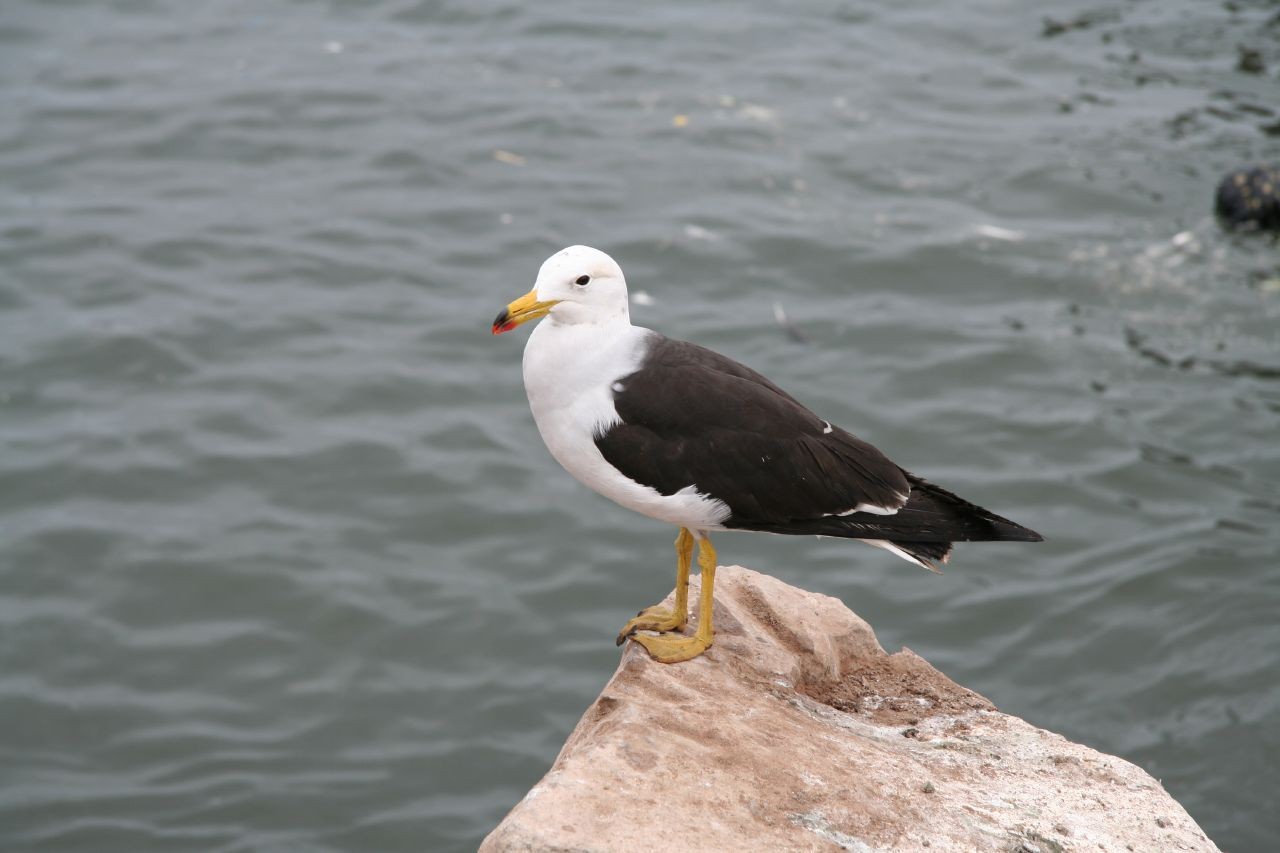Belcher's Gull
A species of Gulls Scientific name : Larus belcheri Genus : Gulls
Belcher's Gull, A species of Gulls
Botanical name: Larus belcheri
Genus: Gulls
Content
Description General Info
 Photo By Alastair Rae from London, UK , used under CC-BY-SA-2.0 /Cropped and compressed from original
Photo By Alastair Rae from London, UK , used under CC-BY-SA-2.0 /Cropped and compressed from original Description
Belcher's gull grows to a length of about 49 centimetres (19 in). The sexes are similar in appearance and in the breeding season, the adult has a white head and very pale grey neck and underparts. The mantle and back are greyish-black and the tail is white with a broad black subterminal band and a white trailing edge. The wing coverts and primaries are black and the secondaries dark grey with white tips. The eye is black, the bill yellow with a distinctive red and black tip, and the legs and feet yellow. Outside the breeding season the head is dark brown with a white ring surrounding the eye. The juvenile is mottled brown and white and attains the adult plumage during its third year. Belcher's gull can be confused with the slightly larger kelp gull (Larus dominicanus) but that species has a small white tip on its otherwise black wing and lacks the Belcher's gull's black band on its tail. 
Size
51 cm (20 in)
Life Expectancy
10-16 years
Nest Placement
Ground
Feeding Habits
Belcher's Gull consumes a varied diet including fish, crabs, shellfish, and carrion. By foraging along coastlines, belcher's Gull adapts unique hunting methods to access these foods, often feeding during specific times to maximize catch.
Habitat
Belcher's Gull predominantly inhabits marine coastal environments, particularly favoring rocky shorelines, bays, and offshore guano islands. This species is found within broader geographical regions that include temperate to subtropical zones along ocean coasts, where it is often associated with areas abundant in marine food resources.
Dite type
Scavenger
General Info
Feeding Habits
Bird food type
Distribution Area
Belcher's gull is found on the Pacific coast of South America. Its range extends from northern Peru to northern Chile in the area influenced by the Humboldt Current and its habitat includes rocky shores, bays and offshore islands. It ventures several kilometres offshore to forage and also feeds on rocky shores when the tide is out. It is a non-migratory species. 
Species Status
Not globally threatened.

 Photo By Alastair Rae from London, UK , used under CC-BY-SA-2.0 /Cropped and compressed from original
Photo By Alastair Rae from London, UK , used under CC-BY-SA-2.0 /Cropped and compressed from original